


GALILEO GALILEI 1564 -
Acknowledgements
Galileo: detail, by the Flemish painter Giusto Sustermans (1597-
Including:
Hans
Lippershey

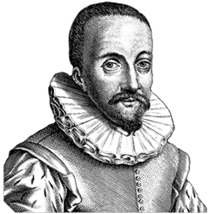 xxxxxThe man who made the first telescope and thus spurred on Galileo to make one of his own, is generally thought to be the Dutch spectacle maker Hans Lippershey (c1570-
xxxxxThe man who made the first telescope and thus spurred on Galileo to make one of his own, is generally thought to be the Dutch spectacle maker Hans Lippershey (c1570-
xxxxxThe story goes that Lippershey invented it by chance when he accidentally lined up two lenses of opposite curvature and diverse focal length. 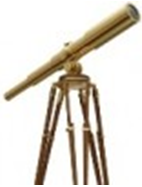 Be that as it may, having constructed what he called his "looker" (kijker) in 1608, he took it to the government and sold it to the military for use in warfare. He was granted 900 florins, but had to produce the spyglass in binocular form. Before the year was out he had sold a number of telescopes, some to Henry IV of France. A Jacques Bovedere of Paris, realising that this invention could be useful in astronomy, told Galileo about it. He promptly built his own -
Be that as it may, having constructed what he called his "looker" (kijker) in 1608, he took it to the government and sold it to the military for use in warfare. He was granted 900 florins, but had to produce the spyglass in binocular form. Before the year was out he had sold a number of telescopes, some to Henry IV of France. A Jacques Bovedere of Paris, realising that this invention could be useful in astronomy, told Galileo about it. He promptly built his own -
xxxxxThe Dutch spectacle maker Hans Lippershey (c1570-
xxxxxBy his development of the telescope, a recent invention around about 1610, the Italian physicist and astronomer Galileo was the first to see sunspots, the lunar landscape, Jupiter’s brightest satellites, and Saturn’s rings. In addition, by a closer observation of Venus, he gave visual support to the sun-
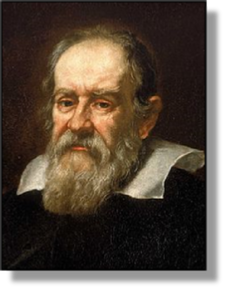 xxxxxBy his development of the astronomical telescope around 1610, the Italian physicist and astronomer Galileo became the first person to see sunspots, the lunar landscape, stars in the milky way, the four brightest satellites of Jupiter, and Saturn's rings (which he called "handles" because he thought they were attached to the planet). Moreover, by observing Venus going through its phases -
xxxxxBy his development of the astronomical telescope around 1610, the Italian physicist and astronomer Galileo became the first person to see sunspots, the lunar landscape, stars in the milky way, the four brightest satellites of Jupiter, and Saturn's rings (which he called "handles" because he thought they were attached to the planet). Moreover, by observing Venus going through its phases -
xxxxxEarlier, Galileo had already made a number important discoveries. He had determined, for example, that free falling bodies, whatever their weight, have the same constant acceleration -
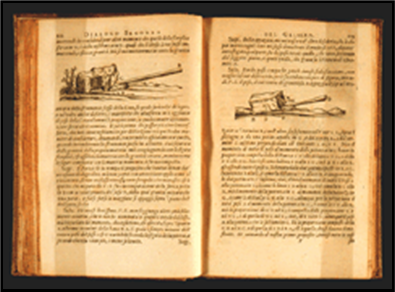 xxxxxGalileo was born near Pisa, son of Vincenzo Galilei, a musician, and educated by the monks of Vallombrosa near Florence. He studied mathematics at Pisa University, and after a period of private teaching, returned as a lecturer in this subject in 1589. Only three years later however, because of his unorthodox views, his contract was not renewed and he went to teach at Padua. It was there that he made a study of mechanics, experimenting with falling bodies and writing a thesis on the specific gravities of solid bodies. In 1610 he attained the post of chief mathematician to the Grand Duke of Tuscany, and he was then able to devote more time to writing and research.
xxxxxGalileo was born near Pisa, son of Vincenzo Galilei, a musician, and educated by the monks of Vallombrosa near Florence. He studied mathematics at Pisa University, and after a period of private teaching, returned as a lecturer in this subject in 1589. Only three years later however, because of his unorthodox views, his contract was not renewed and he went to teach at Padua. It was there that he made a study of mechanics, experimenting with falling bodies and writing a thesis on the specific gravities of solid bodies. In 1610 he attained the post of chief mathematician to the Grand Duke of Tuscany, and he was then able to devote more time to writing and research.
xxxxxIt was at this time that he began to show an interest in astronomy. Having learnt that a type of spyglass had been invented in Holland, he produced his own telescope (some twenty times more powerful than modern field glasses) and turned it towards the skies. His findings, published in his The Starry Messenger of March 1610, produced amazement and not a little scepticism, but it was a paper published three years later in which he came down in support of the Copernican theory that caused the greatest stir among academics and churchmen. The work was labelled as heretical, denounced in public, and, in 1616, was condemned by Rome for contradicting scripture. Worse was to come.
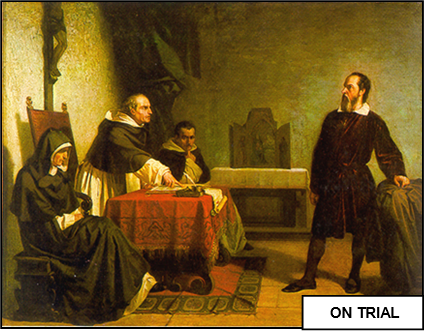 xxxxxHe then spent some years in virtual retirement, writing on comets and trying to find a way of determining longitude at sea. In 1632, however, he returned to the controversial subject of the solar system with the publication of his Dialogue on the two Chief World Systems -
xxxxxHe then spent some years in virtual retirement, writing on comets and trying to find a way of determining longitude at sea. In 1632, however, he returned to the controversial subject of the solar system with the publication of his Dialogue on the two Chief World Systems -
xxxxxHis final work, Discourses and Mathematical Discoveries Concerning Two New Sciences, revised and clarified his earlier studies, particularly those in the field of mechanics and sound waves. It was smuggled out of Italy in manuscript form, and published in Holland in 1638. By that time Galileo had become blind, and he died at Arcetri, near Florence, in January 1642. He was buried in the Medici chapel in the church of Santa Croce, Florence, in the company of Michelangelo and Machiavelli.
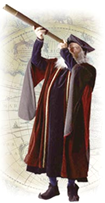
xxxxxDuring his life he made an outstanding contribution to the advancement of scientific knowledge -
xxxxxAs the founder of modern mechanics, Galileo's influence is to be seen at work in the ten or so years following his death. His fellow Italian Evangelista Torricelli, his most famous pupil, went on to invent the barometer; the German physicist Otto von Guericke produced the first air pump, and the Dutch scientist Christiaan Huygens constructed the first practical pendulum clock.
xxxxxIncidentally, Galileo presented the first telescope he made to the Doge of Venice. Realising its potential on the battlefield and in a war at sea, the Doge promptly doubled his salary! .......
xxxxx…… In 1936 the German dramatist Bertolt Brech wrote a play called The Life of Galileo and a film about him was produced in 1939 with Charles Laughton in the leading role.
J1-


